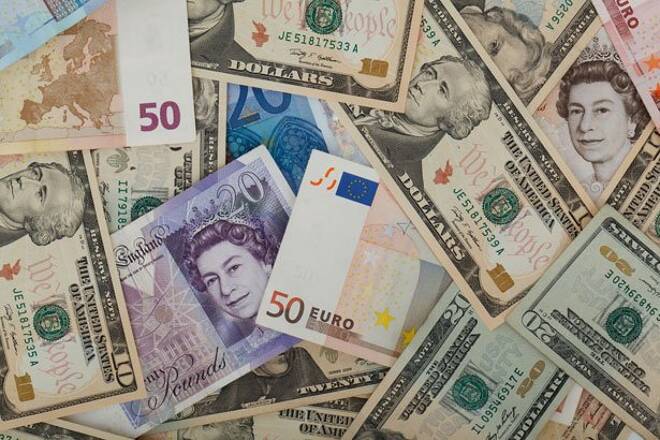Advertisement
Advertisement
Dudley Tries to Save the Dollar, while the Markets look ahead to Stats that Could See the Pound on the March
By:
Earlier in the Day: Macroeconomic data through the Asian session was on the lighter side, with July current account and 2nd estimate GDP figures out of
Earlier in the Day:
Macroeconomic data through the Asian session was on the lighter side, with July current account and 2nd estimate GDP figures out of Japan giving mixed results, Japan’s current account surplus widening, while 2nd estimate GDP figures fell short of the forecasted downward revisions, though the stats had very little influence on the Yen, as the Dollar continued to struggle through the Asian session, despite the best efforts of FOMC voting member Dudley early in the day, who continued to support a final rate hike for the year, in spite of softer inflation.
The hawkish commentary provided little respite for the Dollar, which had slumped on Thursday, weighed down by a bounce in the EUR following the ECB press conference and some pretty weak data out of the U.S.
Other stats earlier in the day included China’s August trade data, which saw the U.S Dollar trade surplus narrow, with imports surging 13.3%, whilst exports rose by just 5.5%, pulling the AUD back from $0.81 levels ahead of the European Open.
At the time of the report, the AUD was up 0.56% at $0.80918, easing back from an intraday high $0.8125, with strong gains through the week, with the Dollar sliding 0.71% against the Yen to ¥107.68, Dollar weakness weighing on Asian equities through the day, with only the Hang Seng in positive territory at the time of the report.
The Day Ahead:
After a week of focus on the EUR and the Dollar, the markets will have an opportunity to take a look at the Pound, which has bounced to $1.31 levels more off the back of Dollar weakness than stellar data out of the UK that could have shifted market sentiment towards the economic outlook and BoE monetary policy through the remainder of the year.
Particularly dovish FOMC member commentary earlier in the week, coupled with some mixed data did the damage to the Dollar, with the markets looking past the weaker UK service sector activity, despite its importance to the UK economy.
For the day ahead, macroeconomic data out of the UK this morning includes July trade data and industrial and manufacturing production figures, with the NIESR GDP estimate also scheduled for release this afternoon. Forecasts are for the trade deficit to narrow in July, the deficit having widened for the last 2-months, despite expectations of a narrowing off the back of a weaker Pound and a positive global economic environment. The GDP estimate is unlikely to have a material impact barring a material shift from the previous month’s estimate.
For the Pound to hold on to $1.31 levels, the trade deficit is going to need to narrow and manufacturing production is going to need to be on the rise in July, following the stagnation last month, though sentiment towards the Dollar will also play its part through the European and U.S sessions.
A lack of material stats out of the U.S through the day will leave the Dollar in the hands of sentiment towards recent FOMC member commentary, with voting member Harker left to speak in the early afternoon, Harker in a position to balance out between the doves and the hawks, following Dudley’s outlook commentary this morning, which was in favour of a final hike before the end of the year.
We will expect the Dollar to make an attempt at recovering through the European session, though Harker could ultimately leave the vote count at 3-1 in favour of a hold for the remainder of the year, which could see the Dollar extend today’s losses, particularly with sentiment towards the EUR so upbeat following Thursday’s ECB press conference.
Stats out of the Eurozone through the session were limited to Germany’s July trade figures, the performance of the German economy key to the Eurozone’s economic growth outlook through the remainder of this year and next. Germany’s trade surplus narrowed in July, following positive numbers in June, pulling back the EUR from intraday highs ahead of the European Open.
While the ECB has issued warning over the possible negative impact of EUR appreciation on the economic outlook and, while the EUR is still sitting below the long-run average, today’s softer trade figures out of Germany raises the question of just how much of an impact the stronger EUR will have on trade terms and whether this would provide the ECB with the necessary justifications to maintain its accommodative policies.
At the time of the report, the EUR was up 0.21% at $1.20484, with the Dollar Spot Index down 0.5% at 91.205, and the Pound poised to make a move, up 0.2% at $1.3127.
About the Author
Bob Masonauthor
With over 28 years of experience in the financial industry, Bob has worked with various global rating agencies and multinational banks. Currently he is covering currencies, commodities, alternative asset classes and global equities, focusing mostly on European and Asian markets.
Did you find this article useful?
Latest news and analysis
Advertisement
